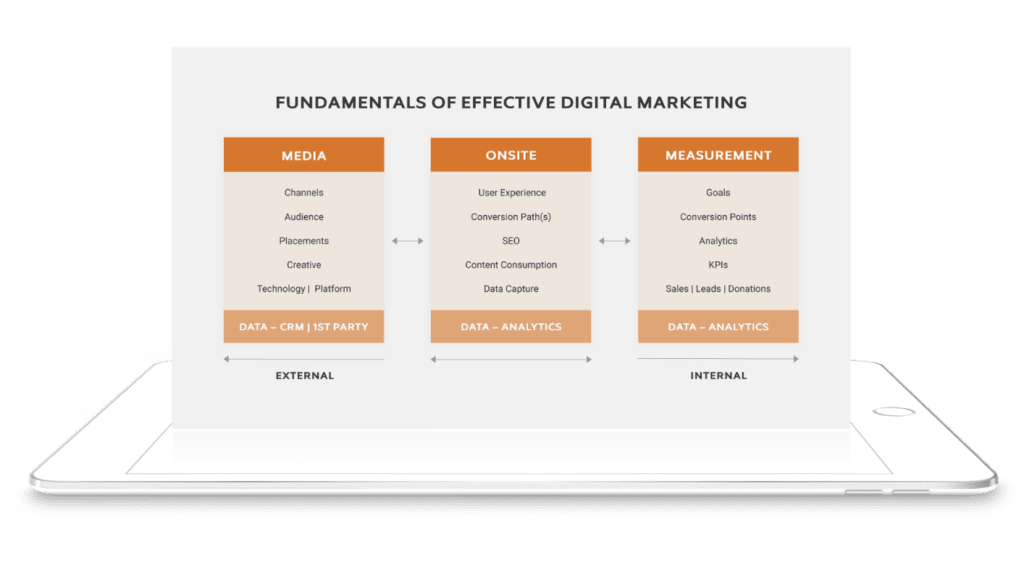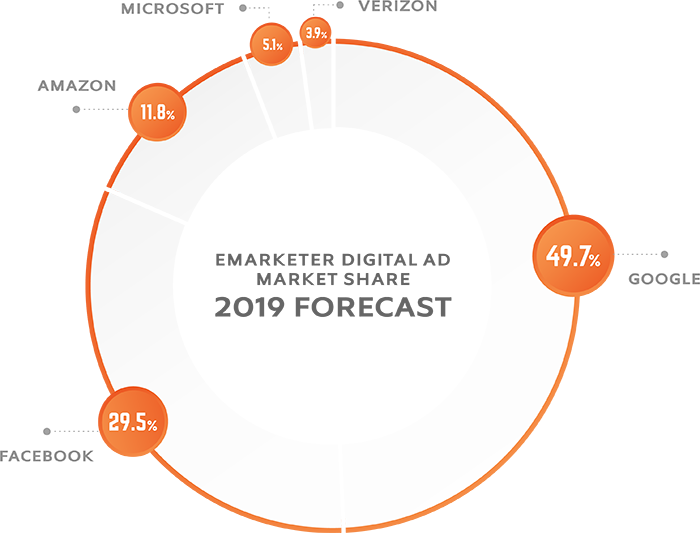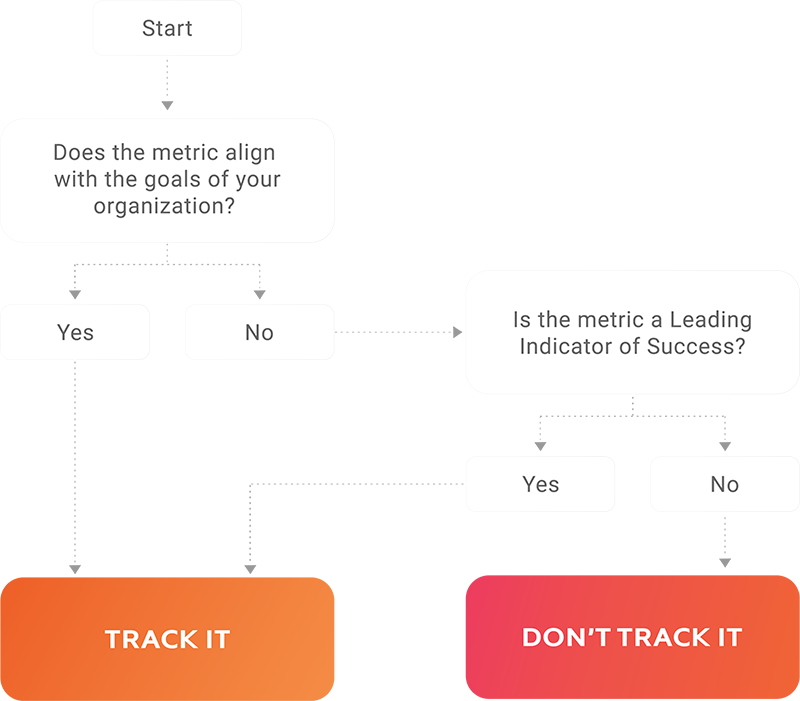The Fundamentals of Effective Digital Marketing
By Raymond Reid (CEO) | June 6, 2020 | Opinion
Unlock digital marketing success with Advertience Inc. Master Media, Onsite & Measurement. Reach Out To Us Today

The Right Message, To The Right Person, At The Right Time
Quite simply, the holy grail narrative that the industry has been preaching for almost 15 years – ‘The Right Message, to The Right Person, at The Right Time’ – has been a shiny object distraction that has blurred the totality of what is required to achieve the desired results from digital marketing.

The reality is that effective digital marketing requires more than just the use of targeting criteria and the right mix of platforms and placements for advertising. Effective digital marketing consists of a balance between Media that includes the targeting criteria, platforms, and placements, Onsite elements of an advertiser’s website, and the relevant capture of data to provide an accurate Measurement of investments against business goals. While each of these are individually very important, they are only parts of a whole that must be combined together to collectively maximize the value of an investment in digital marketing.
Through our experience, we have surmised that there are three fundamental core components where each must be thoughtfully considered, individually, and in unison, to form a cohesive and effective digital marketing strategy.


Media
Digital marketing in North America today has come to represent the exercise of placing advertisements on a shortlist of platforms consisting of Google Search, Programmatic Display, Social (i.e. Facebook & Instagram), and for a smaller group of savvy marketers, e-commerce platforms such as Amazon, Walmart, and Shopify. While there are a myriad of smaller platforms and digital channels through which marketers can purchase digital advertising, the majority of spend goes to a very narrow list of companies, with Google and Facebook dominating all others.
Regardless of the technologies or channels used, digital targeting best practices, including creative and messaging, call-to-action, audience targeting criteria, the use of first-party data (third party data in Canada is not recommended), and placements, are all critical elements that must be employed effectively. This is perhaps the area where industry and marketers’ understanding has progressed the most.
For each of these elements, there are now established benchmarks and best practices available for marketers to better understand and implement within their respective verticals. While there are various strategies that can be utilized to target audiences, the most important aspect of Media is to not only accurately measure the performance of the channels, but also, and most importantly, align the performance to business objectives (i.e. Sales, Leads, Donations, Registrations, etc.). The lack of proper measurement of performance against business goals is akin to donating money to Google, Facebook, and the myriad of intermediaries (from agencies to others) who make up the ad-tech ecosystem.
Onsite
Of the three components that comprise the basis of an effective digital marketing strategy, the one that often receives the least amount of attention is the area we refer to as Onsite. This area encompasses the elements of proper strategic scoping and the implementation of user experience (UX), user journey, A/B testing, conversion paths, SEO, and content consumption analysis, among others. These elements are just as critical to effective digital marketing as Media. As seen through direct evidence, the optimization of the Onsite component can lead to a 3% to 6%, or in the case of **Walmart Canada, a 20% increase in conversions. Such an incremental increase in external channel targeting performance can be significant but is also a challenge to achieve consistently.


Measurement
An established axiom of digital marketing is that everything is measurable and thereby everything can be improved. There is no denying that (thanks to digital marketing) everything can in fact be measured. However, the downside to this is two-fold:
- digital marketing produces an avalanche of data that will need to be digested, mined and analyzed in order to derive meaningful insights, and
- there is a need to proactively define in advance those items that should be measured based on their importance to an advertiser’s business.
Measurement is all about data – whether it is derived from Media or Onsite, data is the engine that drives digital marketing and as such, it is the key to effective digital marketing.
In advance, marketers and their partners must define what success looks like for their campaigns through clear articulation of KPIs and how these KPIs translate into overall business success. Digital marketing often fails to meet expectations when this Measurement framework is not established prior to campaign activation. Conversely, a clearly defined framework will help to optimize performance.
The biggest failure to-date when it comes to the Measurement of digital marketing initiatives is the incorrect, incomplete, and misalignment of an advertiser’s web analytics platform (predominantly Google Analytics today), respective to business goals. Principally, the issue is a failure to properly configure the Google Analytics application for marketing purposes, often a result of an implementation conducted by the advertiser’s IT department who tend to lack an understanding of the required configurations, establishment of goals, data retention, and tracking requirements, just to name a few, that the marketing department is reliant on to measure the efficiencies and effectiveness of a digital marketing campaign. A marketer’s need and use of their web analytics platform data is very specific. Thereby, a resource within the marketing department with IT skillsets and a solid foundational understanding of marketing web analytics set up requirements is needed.
Also, as a result of Google offering Google Analytics as a free product, most marketers do not invest the necessary time or resources in advance to maximize the benefit of the platform. It is more common that these issues are caught either when a campaign is live in market and starts generating data, or when assessing performance post-campaign where holes in data collection appear. All of these Measurement challenges can and should be addressed prior to the launch of a digital marketing campaign; however, it does involve upfront planning and coordination with cross-departmental resources representing marketing, IT, and sales to ensure proper implementation and tracking of the business metrics that matter.
In summary, effective digital marketing requires the planning and implementation of best practices across the three core areas of Media, Onsite, & Measurement. It is only through the harmonization of these areas that marketers can then hope to effectively measure the efficiency of their Media, efficacy of their assets, and alignment to their business goals, to ultimately maximize their investments in digital marketing.
As a digital marketing consultancy, advertience helps clients understand not only the importance and value of each core component, but also how to implement these into a cohesive strategy that will maximize the return of digital marketing investments.
Let us know how we can help you achieve better results for your business.
Sincerely,
Raymond Reid
Founder | CEO, advertience Inc.




